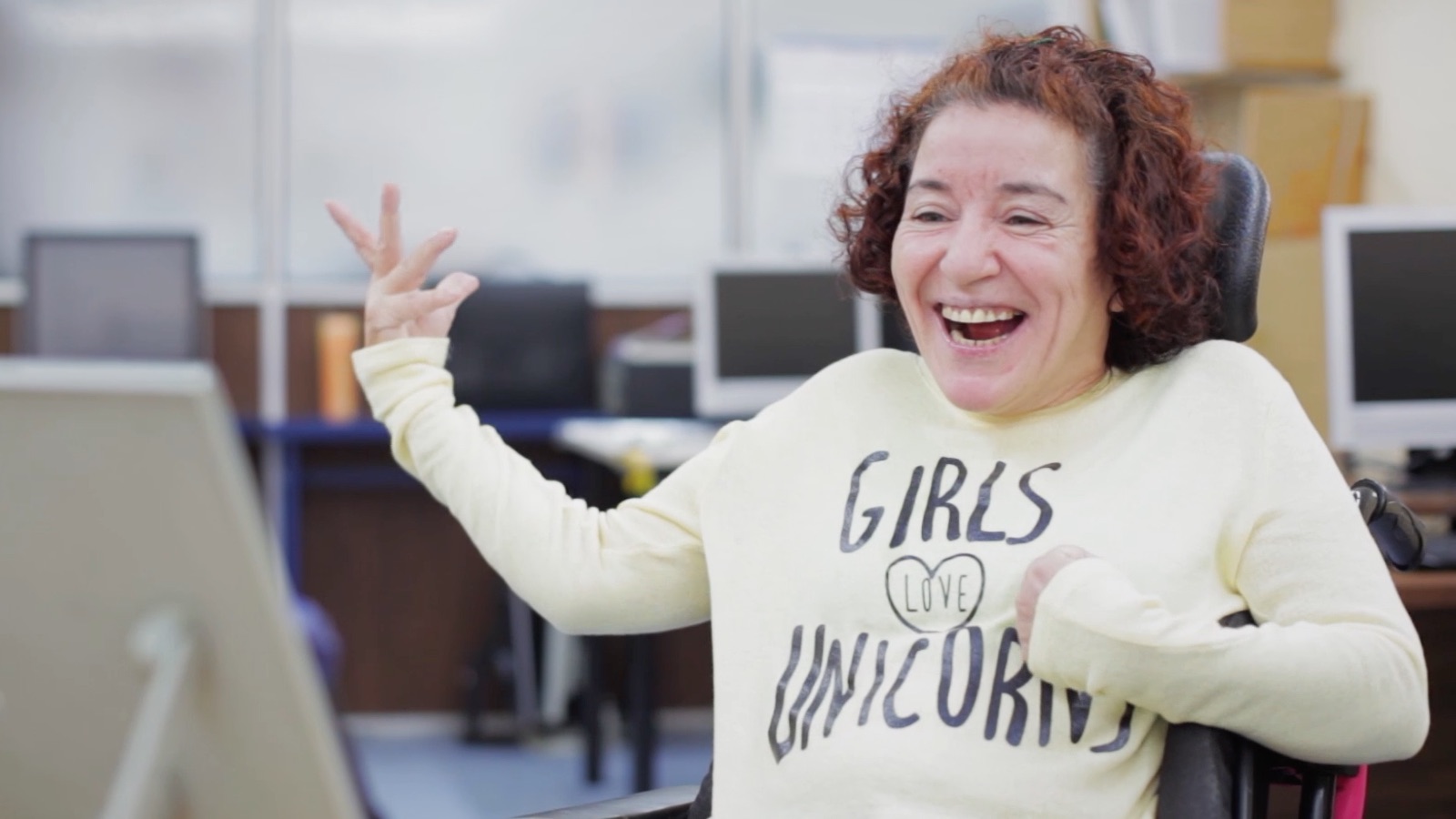2019 Jun 18
Tablets and smartphones have gradually displaced desktop computers in our daily tasks. They are powerful processors that accompany us wherever we go, and we can give them countless uses at any time. Now we are able to communicate, learn, work, play… anywhere; we carry a digital revolution in our pocket.
As with everybody else, tablets play a prominent role in the lives of disabled adults and children with different types of impairments: physical, cognitive, hearing, speaking and visual.
Mobile devices have become a powerful communication and social inclusion tool; and specialist Alternative Augmentative Communication (AAC) apps supported by tablets can help them communicate with their families, friends and strangers.
Occupational therapists have also found in them an essential ally for rehabilitation and learning, as in a single device you can have sensory stimulation activities, communication boards, home automation apps to manage appliances, reading apps or translator to texts and images.
Unfortunately, this technology, like most, has been developed without taking into account all those disabled people with functional diversity and the big barriers they may face when they use it. The good news is that there is an increasing number of accessibility alternatives for people who cannot use a tablet in a conventional way.
iOS and Android accessibility settings
Both iOS and Android standard tablets progressively offer more interesting accessibility options in their settings. People with low vision or who are blind can activate the font magnifier, increase contrast or use voice assistant; there are flash alerts and subtitles aimed at persons with low hearing; interaction and reachability to help with physical difficulties, for example customizable actions through gestures, such as shaking the head, blinking, opening the mouth or using external accessories; pointer and screen control; menu and keyboard size; screen rotation lock, or the possibility of increasing the time required to activate the long press.
People with physical difficulties
In this article, we focus on solutions for people with low mobility that cannot use sensitive tablets touchscreens due to spinal cord injury, cerebral palsy, muscular dystrophy, ALS, multiple sclerosis, Parkinson and other neuronal disorders. From getting help to avoid accidentally pressing the screen with stray fingers, to using the tablet with only head gestures, each person can choose the control mechanism that best suits their mobility capacity.
Both Android and iOS devices support the use of gloves, styluses, Bluetooth keyboards and switch access. Until recently, only Android devices supported a mouse (or any other pointing device) that connected to the system through an OTG adaptor cable or wirelessly over Bluetooh. However, Apple has just announced mouse support for the new version of the iPad.
Switch access is a really good alternative for those disabled people who have severe physical impairments. One or more switches can be connected to the tablet to access system menus and apps. This allows people with more challenging physical difficulties to access the device by pressing with their fingers, hand, head, mouth, chin… However, users would need to test each app first to check whether it is compatible and practical. Different applications and assistive technology devices that allow access through scanning and an augmented pointer have been developed to handle all functions and screen menus.
Android OS tablets accessibility
For Android tablets, a very good example of a solution created for disabled people, both adults and children, that cannot use a touch screen is Mouse4all. It can be adapted to almost any tablet or mobile phone by using one or two switches with the part of the body that best suits the user’s mobility abilities.
Advantages:
- Optimized access with switches.
- Very easy to use.
- It works virtually with any application.
- It is predictable; regardless of the app you are using it always works the same way.
- Adaptable to the needs and cognitive capacity of each person, for users with more difficulties you can choose a simpler menu.
Mouse4all can be complemented with other solutions depending on the context. For example, a person in a wheelchair can use eye control when the computer and the support for the camera have been installed on a desk. But when this person is resting on a bed or on a couch, it is easier to use a control access with a switch. Also, ‘on the go’ with friends or family it is easier for the user to connect the switch to the tablet or mobile.
Mouse4all has a great impact on the lives of people since they can finally use a tablet and manage it completely by themselves, with autonomy and privacy.
If you have any question about tablets for disabled adults or children, or otherwise people with motor skill disabilities, you can reach us at info@mouse4all.com
Information sources:


